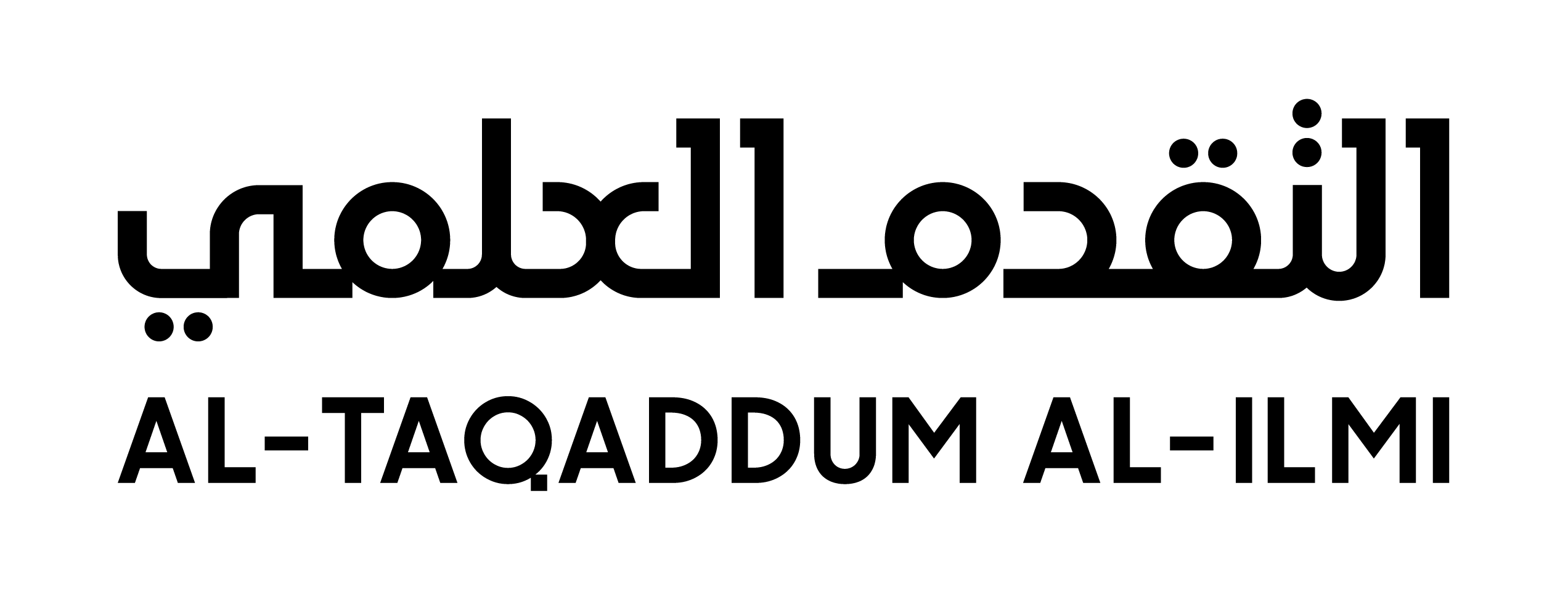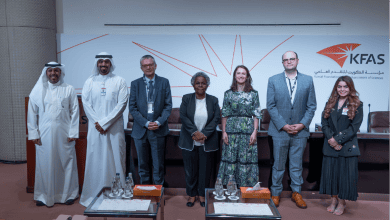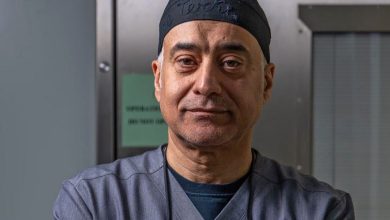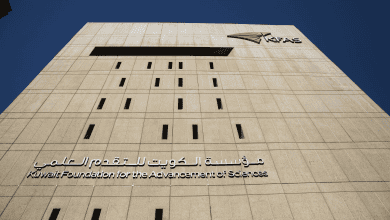A Lighter Approach to Cancer Treatment
A combination of precision chemistry and laser light offers hope for safer cancer therapy

Although radiotherapy and chemo-
therapy are powerful tools to treat
cancer, they also cause major side effects
by damaging or killing healthy cells
as well as cancerous ones. At Kuwait
University, Saad Makhseed is working
on a technique that promises to kill
cancer cells while leaving their healthy
neighbors unharmed.
The approach, known as
photodynamic therapy (PDT), relies
on a combination of three ingredients
— oxygen, light, and a type of molecule
known as a photosensitizer — which are
harmless individually but can kill a cell
when brought together in the right way.
When a photosensitizer is
illuminated by the correct wavelength,
it reacts with nearby oxygen to
transform it into a more reactive form
known as singlet oxygen. These highly
reactive oxygen molecules are toxic
to cells, damaging their components
and eventually causing them to die.
By ensuring that the photosensitizer
is only taken up by cancer cells and
illuminating them as precisely as
possible, clinicians can provide PDT
to treat cancer without damaging any
healthy tissue.
Makhseed, a chemist,
had been studying molecules known
as phthalocyanines (Pcs) in an effort to
improve their performance as catalysts.
While reading about these molecules,
he discovered that they were being used
in PDT. “I like medicine, so I started to
read more about this line of research,
the difficulties and challenges and
what kinds of properties are needed to
use these molecules for photodynamic
therapy,” he said.
Refining Pcs for target treatment
In principle, Pcs are quite efficient at
producing singlet oxygen, but a few
drawbacks limited their use in practice.
The first challenge is that Pc molecules
aren’t soluble in water and so tend to
clump together, forming aggregates that
no longer react with oxygen.
To overcome this, Makhseed
designed and synthesized Pcs with bulky
attachments above and below them, like
two donuts sandwiching the Pc core. By
using charged attachments, he hoped to
prevent the molecule from aggregating.
Makhseed reached out to Petr
Zimcík of Charles University in the
Czech Republic to help analyze the
new molecules. “We had some facilities
which Saad didn’t have at the time, so we
were able to evaluate the compounds’
photo-physical properties,” said Zimcík.
“The modifications perfectly inhibited
aggregation, which is really important
in this field. We really liked these
molecules,” Zimcík added.
In continuing collaboration with
Zimcík, Makhseed has refined the Pc
design even further. The latest iteration
replaces the zinc at the core of Pcs with
indium, making them even more efficient
at producing singlet oxygen.
The second major challenge is to
ensure that Pcs are only taken up by
cancer cells. This is accomplished by
attaching specific functional groups to
the Pcs to make them more attractive to
cancer cells. For example, because cancer
cells divide rapidly, they have higher
metabolic rates than normal cells, so
affixing a Pc to a sugar molecule would
make it more likely to be taken up by a
cancer cell.
Synthesizing large, complex
molecules is no easy task. Thanks to
funding from KFAS, Makhseed now
has the facilities to test the photo-
physical properties of the molecules he
develops, but he still needs to send them
to Zimcík and other collaborators for testing in cell cultures, and, eventually,
in animal models.
Makhseed recently overcame
the challenge of developing repeated
synthesis techniques. “We developed a
building block with certain functionality
which lets us attach anything that we
want to the phthalocyanine,” he said.
Using this technique, he can generate
Pcs with various attachments –
carbohydrates, amino acids or lipids, for
example – to target cancer cells. “By using
existing information from biological
research, we should be able to design
molecules which are highly selective for
cancer cells,” Makhseed said.
Makhseed has patented these
molecules and the new synthesis
technique, and he has high hopes for
them. “These techniques will benefit not
only Kuwaiti society, but the Gulf area
and even the entire world,” he said. “This
kind of treatment doesn’t involve a big
procedure, so it can be done as often as
needed. It can be highly selective, so there
are no side effects for the patients, and
there’s no need for an operation either.”
Zimcík is planning to include
Makhseed’s molecules in a global project
to test the efficacy of different Pcs. Along
with Makhseed’s compounds, he is
collecting molecules from labs in China,
Russia, Spain, Poland, and elsewhere.
“The biological assessment of PDT
activity is done differently in every lab,
which makes it problematic to compare
the results,” Makhseed said. “So, we
wanted to standardize the protocol and
collect the best molecules that have been
published and compare them to see what
the differences are.”
Makhseed’s new technique
for tweaking the structure of
phthalocyanines also opens up the
possibility of customizing them for use
as catalysts, bringing him full circle.
In addition to the PDT work, he’s
developing Pcs customized to absorb
carbon dioxide or purify water and is
also starting a collaboration with a lab at
Durham University in the UK to develop
organic light-emitting diodes.
“For Kuwait, the knowledge we’re
gaining is very important,” Makhseed
said. “This research gives us novel
information and helps us develop
optimal molecules more quickly. I’m
also building external collaborations and
bringing that knowledge back to Kuwait.”
Makhseed hopes to see his work
developed into an effective cancer
treatment and become available to the
public. “What we have now could be used
as a medicine in the future if funders
help us find the right people and set
up clinical trials,” he said. “I want to be
part of a field where we help people get
treated, and even cured permanently.”




